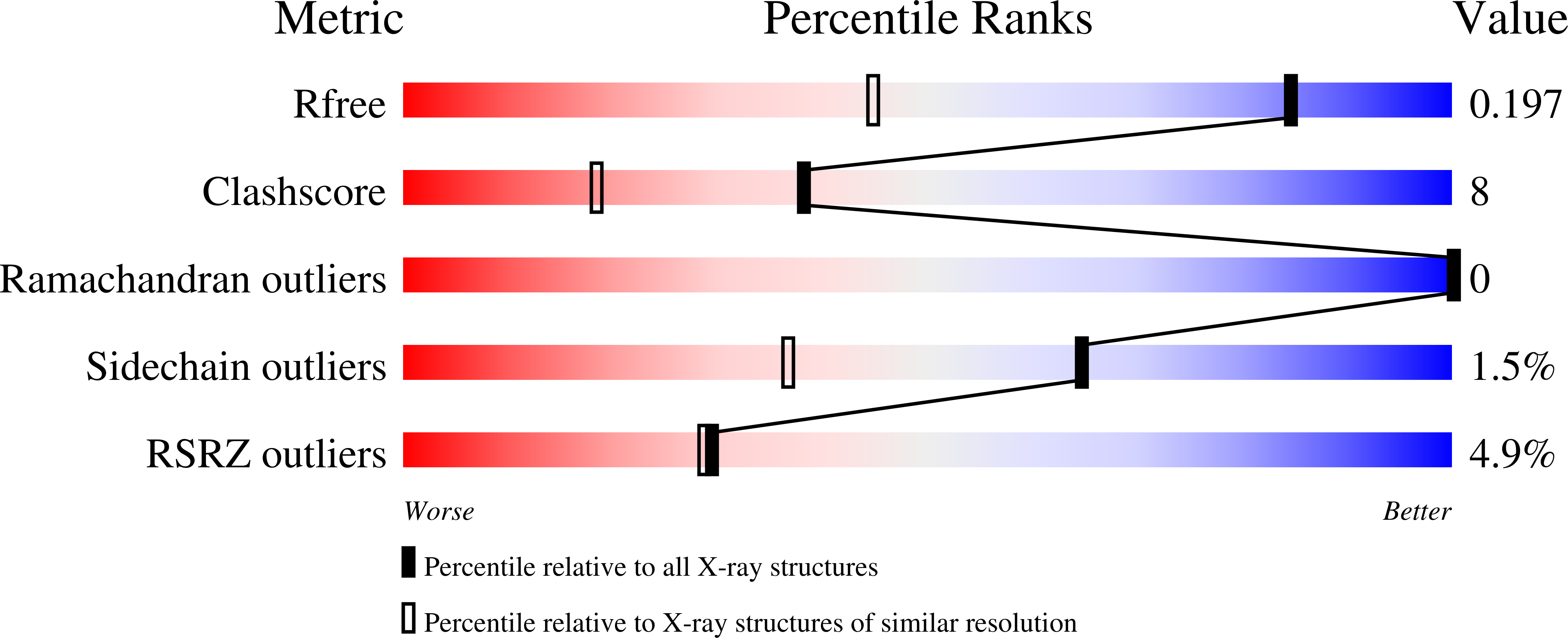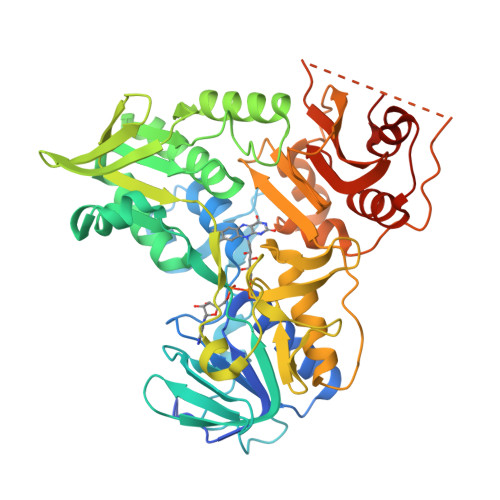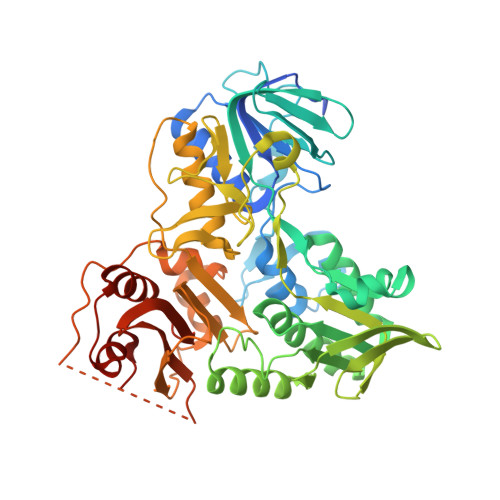Structure/Function Relations in Aifm1 Variants Associated with Neurodegenerative Disorders
Sevrioukova, I.(2016) J Mol Biology 428: 3650
- PubMed: 27178839
- DOI: https://doi.org/10.1016/j.jmb.2016.05.004
- Primary Citation of Related Structures:
5FS6, 5FS7, 5FS8, 5FS9 - PubMed Abstract:
The X-linked AIFM1 gene encodes mitochondrial apoptosis-inducing factor (AIF), an FAD-containing and NADH-specific oxidoreductase critically important for energy metabolism and execution of the caspase-independent cell death pathway. Several recently identified mutations in human AIFM1 lead to neurodegenerative disorders varying in severity and onset time. This study was undertaken to structurally and functionally characterize four pathologic variants of human AIF: V243L, G262S, G308E, and G338E. A strong correlation between the mutational effects on the AIF function and clinical phenotype was observed only for the G308E aberration, drastically damaging both the redox properties of AIF and mitochondrial respiration. In contrast, only minimal or mild changes were detected in the structure/function of AIF V243L and G338E, respectively, indicating that a marked decrease in their cellular expression likely triggers the disease. Alterations in the structure and redox activity of AIF G262S, on the other hand, were more severe than could be predicted based on the clinical phenotype. Together, the results of this and previous studies allow to conclude that the phenotypic variability and severity of the AIFM1-related disorders depend on which AIF feature is predominantly affected (i.e., cellular production level, structure, redox or apoptogenic function) and to what extent. Only a drastic decrease in the expression level or/and redox activity of AIF tends to cause an early and severe neurodegeneration, whereas less pronounced changes in the AIF properties could lead to a broad range of slowly progressive neurological disorders.
Organizational Affiliation:
Department of Molecular Biology and Biochemistry, University of California, Irvine, CA 92697-3900, USA. Electronic address: sevrioui@uci.edu.



















